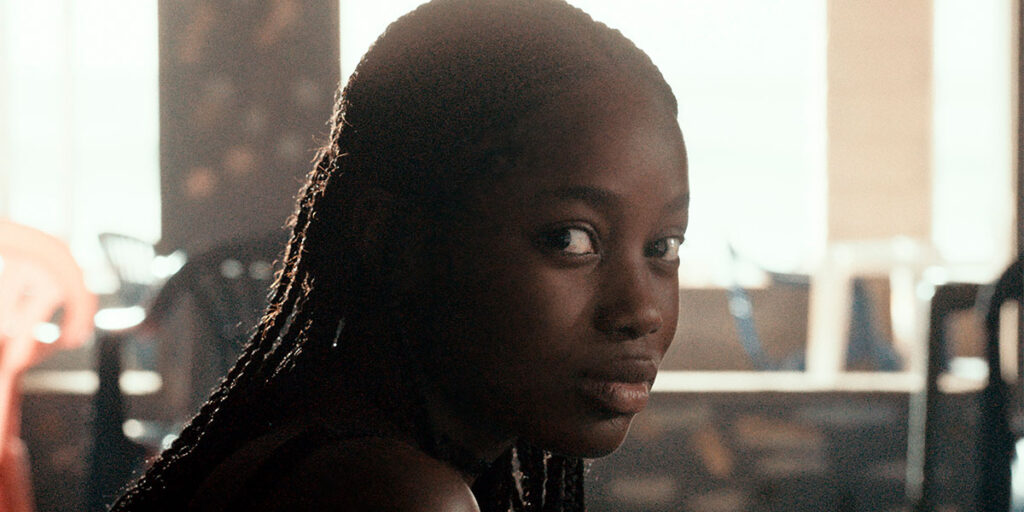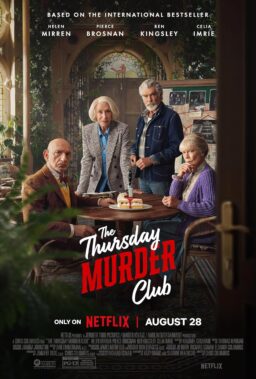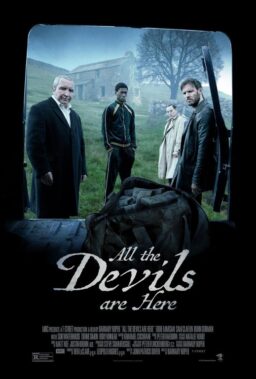Toronto often serves as the second stop for films that had their premiere back in May at the Cannes Film Festival, giving North American audiences their first chance to catch up with what the buzz was on the Croisette. What’s interesting is how often that buzz shifts from Cannes to TIFF—a film that was modestly received there may be rapturously so here, or vice versa. And it’s interesting to notice trends in the Cannes-to-TIFF films, as three films that are making that leap this year from competition for the Palme to trying to stand out in the crowded TIFF line-up share a unique trait: they all play with genre in a way that could qualify them as horror films.
Mati Diop made headlines by being the first female director of color to compete for the Palme with her stirring and evocative “Atlantics,” a story of class in Senegal that undeniably heralds Diop as a fascinating filmmaker to watch. Already a presence in front of the camera in films like “35 Shots of Rum” and “Simon Killer,” Diop co-wrote and directed this deeply felt and hypnotic story of women along the coast of Senegal, where opportunities for them and their partners are sparse. For the first half, “Atlantics” is a film that takes its time, a sensory experience more than a narrative one in the way Diop captures the sound of waves crashing on the coast or music in the night air. Then her film becomes something more genre as it delves into the way decisions can haunt and plays with the mythology of the region in which it’s set.
In the coastal Senegalese capital of Dakar, Ada (the excellent Mama Sané) has been promised to a rich man whom she does not know nor love. She does however love Souleiman, a worker on a massive new building down the coast from where most of our characters live. Souleiman and his fellow workers can’t even get paid for the back-breaking work they do, and so they decide to do what people often do when they are given no options: they leave. Ada wakes up one night to find that Souleiman and most of the men in the area left on a raft overnight, which reportedly capsized, killing all of them. She goes on to her the relationship in which she is basically property, but strange things start to happen. Could Souleiman still be alive? Or could he have returned from the other side?
Much of “Atlantics” will be way too languorous for viewers, especially in the tone-setting first half. Even when mysterious illnesses and ghostly figures start to creep into the plot, the film really takes its time, focusing on character and especially setting more than traditional narrative. Whereas some might look at the pace of Diop’s film and consider it to be lacking in urgency, I found that urgency in the social dynamic and perfect use of location. It’s a transportive film to a region of the world we’ve never really seen before, and Diop’s sense of filmmaking was clearly influenced by Claire Denis, who directed her in “35 Shots,” another film that could be called slow but develops its own mesmerizing rhythm. I wouldn’t usually compare a new filmmaker to a master like Denis after one movie, but “Atlantics” earns it.

Another Cannes film from an international master making the Cannes-to-TIFF leap is Kleber Mendonça Filho and Juliano Dornelles’ fascinating “Bacurau,” a crazy genre hybrid that exudes the confidence of the people who made it. I know you read a lot of things like this lately in the era of hyperbole, but you really haven’t seen a film quite like this one. What starts as a relatively traditional regional drama about life in small village outside of Sao Paolo, Brazil becomes an homage to John Carpenter, complete with a music track written by the master, a school in the film named João Carpinterio, and a blood-soaked structure reminiscent of some of his classic films. The movie seems to have baffled a lot of people in Cannes, but I love it and can’t wait to see again.
From the beginning, Filho and Dornelles try to play with audience expectations, smashing genres together in unexpected ways. They open their film with “A few years from now … ” and introduce us to the titular fictional village on the day of the funeral of one of its matriarchs, a woman named Carmelita. We meet her granddaughter Teresa (Barbara Colen) and an irascible local named Domingas (Sonia Braga), and the film starts to toy a bit with the supernatural as the funeral procession moves forward. We also learn that the water supply has been cut off and are quickly introduced to a local politician who promises to make things better but also basically kidnaps a girl to take back with him. Then a teacher discovers that the city of Bacurau literally isn’t on the map anymore just before they also learn they have no more cell service. And then the Americans with guns show up, led by Udo Kier of all people, and things get crazy. I didn’t even mention the spaceship.
The word I think of in the context of “Bacurau” is confidence. It could be an allegory for social inequity, the way small communities are overtaken by large cities, or enjoyed purely as an action flick, but every frame oozes with confidence. With works like “Aquarius” and “Neighboring Sounds,” Filho has become a well-known filmmaker, but this is my favorite of his works to date, a movie that constantly defies expectations in terms of what it’s going to do next, but never feels haphazardly conceived or directed. Somehow, the social commentary leads to the action, not unlike a movie like, say, “Escape From New York.”

Bertrand Bonello’s “Zombi Child” is not exactly the genre movie you may be expecting, but it too plays with audience expectations, although with less successful results than “Atlantics” or “Bacurau.” There’s certainly a lot going on in Bonello’s film – a piece that’s about cultural appropriation, dead-eyed teenagers, and underestimating a history you don’t really understand – but it never coheres into something that resonates. It’s not unlike a piece of fiction by one of its teen characters—full of ideas and certainly confidently made, but always just short of coming together as a complete piece.
Believe it or not, “Zombi Child” intercuts between stories in 1962 Haiti and a girls school in present day France. In the former, a man named Clairvius is murdered using a voodoo practice that makes him look dead. He is then buried “half-alive, half-dead,” and his body is exhumed to turn him into a zoned-out worker on a sugar plantation or a “zombi.” Clairvius escapes his captivity and wanders the hills of Haiti, uncertain of his place in the world.
Meanwhile, Fanny (Louise Labeque) makes friends at a all-girls school with the new student named Melissa (Wislanda Louimat), whose parents died in the 2010 Haiti earthquake. She now lives with her aunt, and she tells her all-white new sorority that auntie is a “mambo,” or a practitioner of voodoo. As you can imagine, bad things will eventually happen.
Fanny and her friends are practically zombies themselves, directed to give almost emotionless, flat performances, only really coming alive in a scene when they sing a song with lyrics that don’t reflect their lives whatsoever. Is Bonello paralleling modern teen culture with the walking dead? That feels a little cheap and underdeveloped. More powerful is Melissa’s arc as a girl for whom death is a very real part of her life—not just in the legend of her grandfather Clairvius but the loss of her parents. Melissa’s unique background and perspective are the most interesting element of “Zombi Child,” and I wished the whole film had been from her POV. As it is, it feels more like an experiment than a fully-realized project, a rare misstep for a great director.












